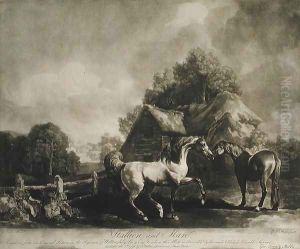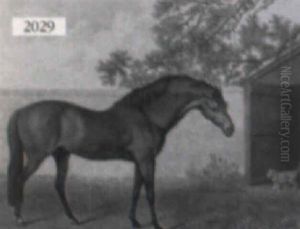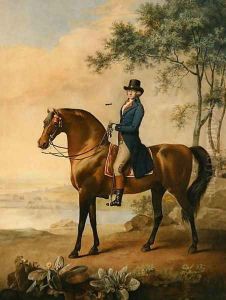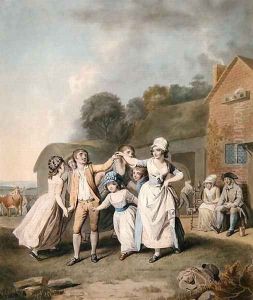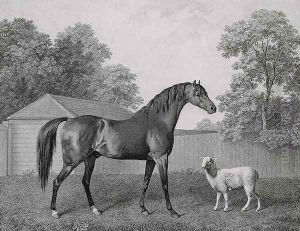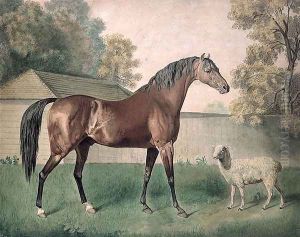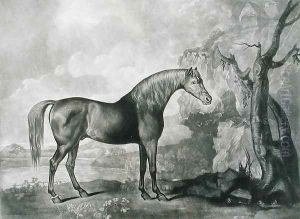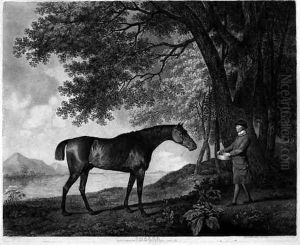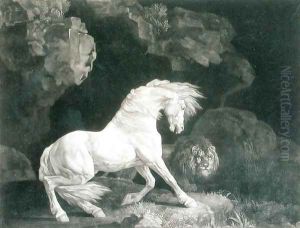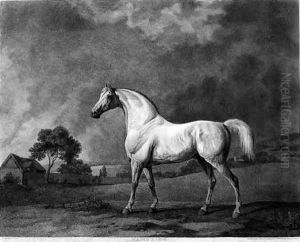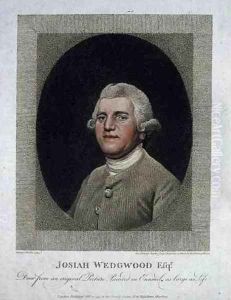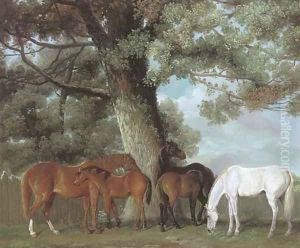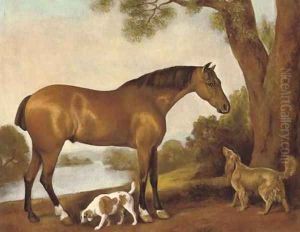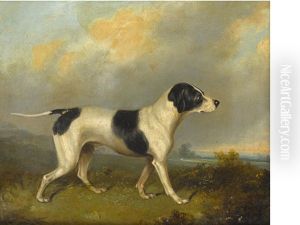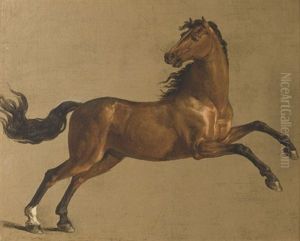George Townley Stubbs Paintings
George Townley Stubbs was a distinguished British painter and engraver, best known for his work in the realm of animal and sporting subjects, especially horses. Born in 1756 in Liverpool, he was the son of the renowned painter George Stubbs, famous for his depictions of horses. Growing up in an environment steeped in artistic excellence, George Townley Stubbs was heavily influenced by his father's work, which played a pivotal role in shaping his career path.
Under his father's guidance, George Townley Stubbs honed his skills in painting and engraving. Unlike many artists of his time who sought formal education in art academies, Stubbs's learning came from an apprenticeship model, working closely with his father. This unique education allowed him to develop a profound understanding of animal anatomy, a knowledge that greatly contributed to the accuracy and liveliness of his work.
Stubbs is particularly noted for his engravings, which include works after his father's paintings. His series of engravings titled 'The Anatomy of the Horse,' which he completed in collaboration with his father, remains a significant contribution to both the art and science of the time. These works not only demonstrate his technical skill but also his ability to convey complex anatomical details with clarity and elegance.
Throughout his career, George Townley Stubbs exhibited at prestigious venues such as the Royal Academy, although he never became a member. His reputation was built on his exceptional ability to capture the essence of his equine subjects, combining scientific accuracy with artistic beauty. Stubbs's works were highly sought after by the aristocracy and horse enthusiasts, who admired his dedication to portraying the noble characteristics of the horse.
Despite his success, George Townley Stubbs's life was not without challenges. The shadow of his father's towering reputation sometimes obscured his individual contributions to art. Moreover, the later years of his life saw a decline in his popularity as tastes in art shifted towards Romanticism and away from the detailed realism that characterized his work.
George Townley Stubbs passed away in 1815, leaving behind a legacy that, while closely linked to that of his father's, stands on its own merits for its contribution to British art, especially in the fields of animal and sporting painting. His works continue to be celebrated for their precision, beauty, and the insight they provide into 18th-century equine culture.
